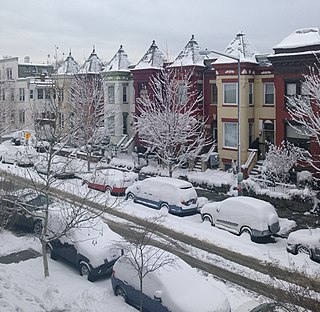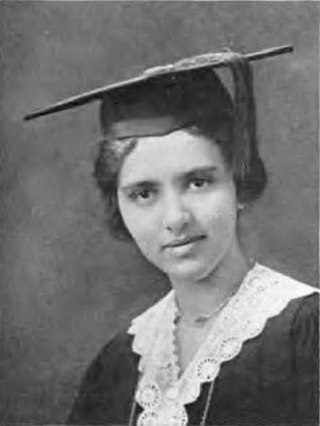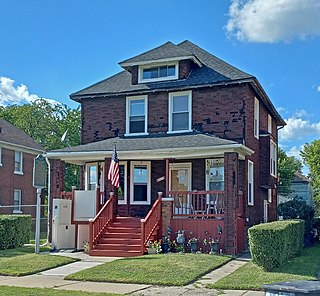
The Fourteenth Amendment to the United States Constitution was adopted on July 9, 1868, as one of the Reconstruction Amendments. Usually considered one of the most consequential amendments, it addresses citizenship rights and equal protection under the law and was proposed in response to issues related to formerly enslaved Americans following the American Civil War. The amendment was bitterly contested, particularly by the states of the defeated Confederacy, which were forced to ratify it in order to regain representation in Congress. The amendment, particularly its first section, is one of the most litigated parts of the Constitution, forming the basis for landmark Supreme Court decisions such as Brown v. Board of Education (1954) regarding racial segregation, Loving v. Virginia (1967) regarding interracial marriage, Roe v. Wade (1973) regarding abortion, Bush v. Gore (2000) regarding the 2000 presidential election, Obergefell v. Hodges (2015) regarding same-sex marriage, and Students for Fair Admissions v. Harvard (2023) regarding race-based college admissions. The amendment limits the actions of all state and local officials, and also those acting on behalf of such officials.
Heart of Atlanta Motel, Inc. v. United States, 379 U.S. 241 (1964), was a landmark decision of the Supreme Court of the United States holding that the Commerce Clause gave the U.S. Congress power to force private businesses to abide by Title II of the Civil Rights Act of 1964, which prohibits discrimination on the basis of race, religion, or national origin in public accommodations.
Charles Hamilton Houston was an American lawyer. He was the dean of Howard University Law School and NAACP first special counsel. A graduate of Amherst College and Harvard Law School, Houston played a significant role in dismantling Jim Crow laws, especially attacking segregation in schools and racial housing covenants. He earned the title "The Man Who Killed Jim Crow".
The Equal Protection Clause is part of the first section of the Fourteenth Amendment to the United States Constitution. The clause, which took effect in 1868, provides "nor shall any State ... deny to any person within its jurisdiction the equal protection of the laws." It mandates that individuals in similar situations be treated equally by the law.
Blockbusting is a business practice in the United States in which real estate agents and building developers convinced residents in a particular area to sell their property at below-market prices. This was achieved by fearmongering the homeowners, telling them that racial minorities would soon be moving into their neighborhoods. The blockbusters would then sell those same houses at inflated prices to black families seeking upward mobility. Blockbusting became prominent after post-World War II bans on explicitly segregationist real estate practices. By the 1980s it had mostly disappeared in the United States after changes to the law and real estate market.

Bloomingdale is a neighborhood in the Northwest quadrant of Washington, D.C., less than two miles (3 km) north of the United States Capitol building. It is a primarily residential neighborhood, with a small commercial center near the intersection of Rhode Island Avenue and First Street NW featuring bars, restaurants, and food markets.
A covenant, in its most general sense and historical sense, is a solemn promise to engage in or refrain from a specified action. Under historical English common law, a covenant was distinguished from an ordinary contract by the presence of a seal. Because the presence of a seal indicated an unusual solemnity in the promises made in a covenant, the common law would enforce a covenant even in the absence of consideration. In United States contract law, an implied covenant of good faith is presumed.

California Proposition 14 was a November 1964 initiative ballot measure that amended the California state constitution to nullify the 1963 Rumford Fair Housing Act, thereby allowing property sellers, landlords and their agents to openly discriminate on ethnic grounds when selling or letting accommodations, as they had been permitted to before 1963. The proposition became law after receiving support from 65% of voters. In 1966, the California Supreme Court in a 5–2 split decision declared Proposition 14 unconstitutional under the equal protection clause of the United States Constitution. The U.S. Supreme Court affirmed that decision in 1967 in Reitman v. Mulkey.
Jones v. Alfred H. Mayer Co., 392 U.S. 409 (1968), is a landmark United States Supreme Court case which held that Congress could regulate the sale of private property to prevent racial discrimination: "[42 U.S.C. § 1982] bars all racial discrimination, private as well as public, in the sale or rental of property, and that the statute, thus construed, is a valid exercise of the power of Congress to enforce the Thirteenth Amendment."
Hansberry V. Lee, 311 U.S. 32 (1940), is a famous and commonly-used case in civil procedure classes for teaching that res judicata does not apply to an individual whose interests were not adequately represented in a prior class action. The case was successfully argued by the civil rights attorney Earl B. Dickerson.
An unenforceable contract or transaction is one that is valid but one the court will not enforce. Unenforceable is usually used in contradiction to void and voidable. If the parties perform the agreement, it will be valid, but the court will not compel them if they do not.
Phineas Indritz, was an American constitutional lawyer active in the civil rights movement.

Loren Miller was an American journalist, civil rights activist, attorney, and judge. Miller was appointed to the Los Angeles County Superior Court by governor Edmund G. "Pat" Brown in 1964 and served until his death in 1967. Miller was a specialist in housing discrimination, whose involvement in the early stages of the Civil Rights Movement earned him a reputation as a tenacious fighter for equal housing opportunities for minorities. Miller argued some of the most historic civil rights cases ever heard before the Supreme Court of the United States. He was chief counsel before the court in the 1948 decision that led to the outlawing of racial restrictive covenants, Shelley v. Kraemer.

The Shelley House is a historic house at 4600 Labadie Avenue in St. Louis, Missouri. Built in 1906, this duplex was the focus of the 1948 United States Supreme Court case Shelley v. Kraemer, which ruled that judicial enforcement by state courts of racially restrictive covenants violated the Constitution. The house was designated a National Historic Landmark on December 14, 1990.
Shelley v. Kraemer, 334 U.S. 1 (1948), is a landmark United States Supreme Court case that held that racially restrictive housing covenants cannot legally be enforced.
Corrigan v. Buckley, 271 U.S. 323 (1926), was a US Supreme Court case in 1926 that ruled that the racially-restrictive covenant of multiple residents on S Street NW, between 18th Street and New Hampshire Avenue, in Washington, DC, was a legally-binding document that made the selling of a house to a black family a void contract. This ruling set the precedent upholding racially restrictive covenants in Washington; soon after this ruling, racially restrictive covenants flourished around the nation. Subsequently, in Shelley v. Kraemer (1948) the court reconsidered such covenants and found that racially restrictive covenants are unenforceable.

Mary Gibson Hundley was an educator and civil rights activist from Baltimore, Maryland. She was born to lawyer Malachi Gibson and teacher Mary Matilda Syphax. Through her mother's side of the family, she is a descendant of Martha Washington and the granddaughter of William Syphax, the namesake of the William Syphax School in Washington D.C. She is also a relative of Douglas Syphax, a Union army officer during the American Civil War.

The Orsel and Minnie McGhee House is a single family home located at 4626 Seebaldt Street in Detroit. The house played a role in the landmark Shelley v. Kraemer Supreme Court decision that determined racially restrictive covenants to be unenforceable. It was listed on the National Register of Historic Places in 2022.
Civil Rights Tour: Legal Campaigns - Hurd v. Hodge, Landmark Supreme Court Case. [1]







